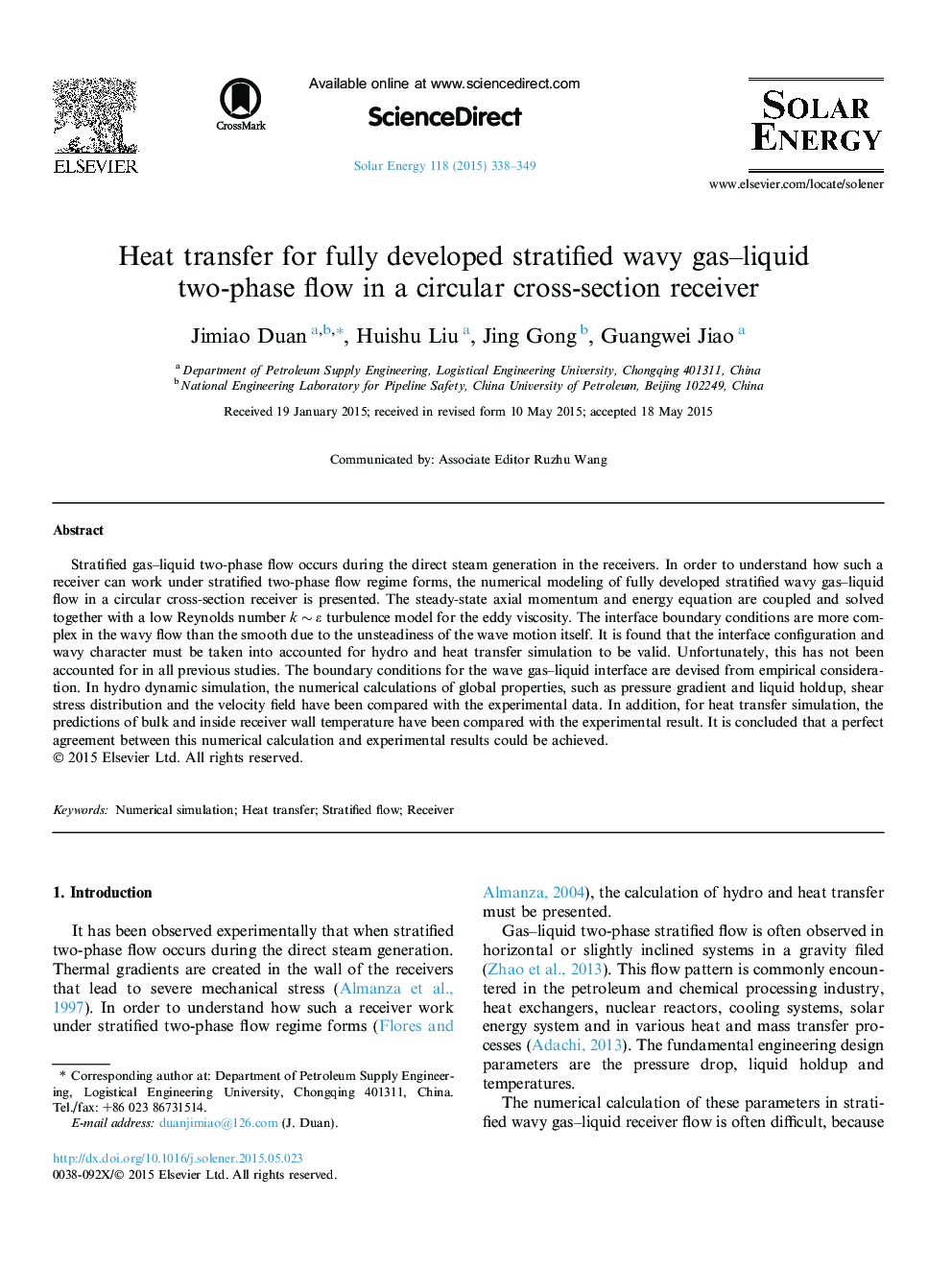| Article ID | Journal | Published Year | Pages | File Type |
|---|---|---|---|---|
| 7937748 | Solar Energy | 2015 | 12 Pages |
Abstract
Stratified gas-liquid two-phase flow occurs during the direct steam generation in the receivers. In order to understand how such a receiver can work under stratified two-phase flow regime forms, the numerical modeling of fully developed stratified wavy gas-liquid flow in a circular cross-section receiver is presented. The steady-state axial momentum and energy equation are coupled and solved together with a low Reynolds number k â¼Â É turbulence model for the eddy viscosity. The interface boundary conditions are more complex in the wavy flow than the smooth due to the unsteadiness of the wave motion itself. It is found that the interface configuration and wavy character must be taken into accounted for hydro and heat transfer simulation to be valid. Unfortunately, this has not been accounted for in all previous studies. The boundary conditions for the wave gas-liquid interface are devised from empirical consideration. In hydro dynamic simulation, the numerical calculations of global properties, such as pressure gradient and liquid holdup, shear stress distribution and the velocity field have been compared with the experimental data. In addition, for heat transfer simulation, the predictions of bulk and inside receiver wall temperature have been compared with the experimental result. It is concluded that a perfect agreement between this numerical calculation and experimental results could be achieved.
Related Topics
Physical Sciences and Engineering
Energy
Renewable Energy, Sustainability and the Environment
Authors
Jimiao Duan, Huishu Liu, Jing Gong, Guangwei Jiao,
